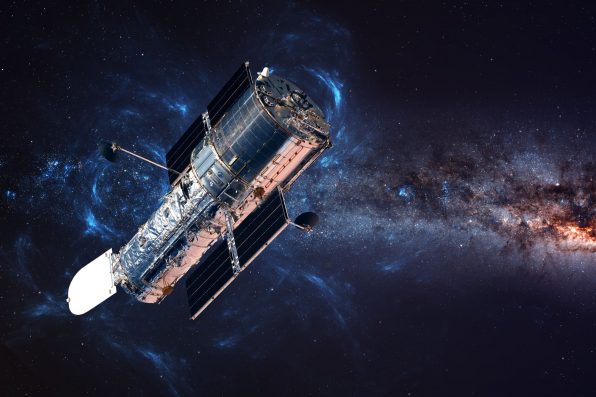NASA’s Hubble Space Telescope Has Found Many More Black Holes In The Early Universe Than Previously Thought

Astronomers have discovered there were more black holes than previously estimated after studying the observations that the Hubble Space Telescope made.
The new discovery can help them understand more about how these black holes formed and why they looked larger than expected.
Black holes have been around for a long time. They are incredibly huge, with masses about one billion times more than that of the sun.
They grow by absorbing surrounding material, a process called accretion. The process generates significant amounts of radiation, and the pressure from the radiation limits how quickly black holes can grow.
So, the scientists were confused about how the supermassive black holes from the early universe were able to reach such enormous sizes since, in the grand scheme of the universe, they had so little time to feed on cosmic material. They must have grown quicker than physically possible or were born incredibly gigantic.
One possible explanation is that the supermassive black holes formed in dense star clusters where black holes and stars can merge. The combined black holes and stars would then grow at a rapid rate.
Another theory is that the black holes formed with masses around 1,000 times greater than the massive stars we know about today.
An invisible substance known as dark matter could have confined gas clouds, and background radiation could have prevented stars from forming, causing them to collapse into black holes.
However, only a small handful of dark matter halos grow large enough for such a process to occur. So, this explanation can only make sense if the early black holes are relatively rare.

Vadimsadovski – stock.adobe.com – illustrative purposes only
It was a challenge to find black holes that existed in the first billion years of the universe. Their brightness varies over time, so they are easy to miss.
The research team tracked some of the earliest galaxies for changes in brightness over the course of 15 years. Then, they used the data to determine how many black holes were out there.
It turned out that there were many more black holes in early galaxies than previously thought. Overall, more black holes are present than can be explained by direct collapse.
A third hypothesis could explain the phenomenon. If large numbers of dark matter particles are captured when stars form during the gravitational contraction of gas clouds, then the stars’ internal structures can be completely altered.
Therefore, the growth of black holes can continue for far longer than the average lifetime of a regular star, allowing them to reach humongous sizes.
It is likely that a similar process took place to result in the many supermassive black holes observed in the early universe.
The study of early black hole formation is only just beginning. Next, astronomers must keep an eye out for the observations that the James Webb Space Telescope is making.
The details of the findings were published in Astrophysical Journal Letters.
Sign up for Chip Chick’s newsletter and get stories like this delivered to your inbox.
More About:News





